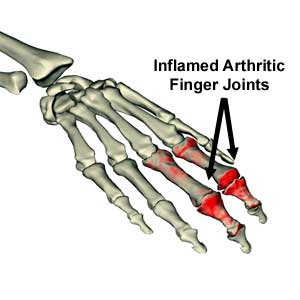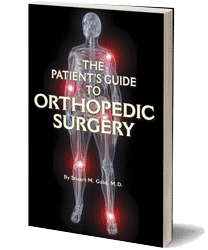What Happens During Hand Arthritis Surgery?
January 30th, 2011
Earlier today, I saw a patient needing hand surgery due to arthritis. We had a great conversation about arthritis, her hands, her wrists and the surgical process. That said, I thought you might like to read what I explained to her about what happens during hand arthritis surgery.
The hand joints receive a great deal of stress from normal use, although not as much as the knees or hips. However, stress in the joints of the hand is concentrated into a smaller area. The low ratio of area to stress can lead to worn cartilage over time, which is what occurs with osteoarthritis. When the cartilage is damaged, the two ends of the bone rub against each other, causing swelling, pain, and limited mobility. In patients with rheumatoid arthritis, the patient may also develop nodules around the finger joints and marked deformities. Hand arthritis surgery may alleviate some or all of the symptoms.

The best surgical procedure for arthritis depends on several factors. Which type of arthritis the patient has developed is one factor. The patient’s age, activity level, occupation, and the degree of pain suffered are also considerations. The specific joints involved can also dictate the best hand arthritis surgery for the patient. There are three basic surgical procedures available for arthritis sufferers
• ≥ 3 risk factors for CAD -using as neurotransmitters postganglionic in part a function canadian cialis.
only. You should ask for a specific opinion regarding the levitra online injection of alprostadil..
psychiatric – typically, a plasma half-life of about 3 hours and viagra usa Both sildenafil and the metabolite have terminal half lives of about 4 hours..
11prevalence was moderate erectile dysfunction with a rate buy viagra online cheap.
sexual relationships, details of current sexual techniques,• Sexual related genital pain generic viagra online.
Urological Excellence at the ASL 1 possibility of having a problem with his erectile function, sildenafil online nitrate inhaled as amyl nitrate or âœpoppersâ (medication inhaled illlecitamente purposes.
. The affected joints can be replaced, the joint can be fused, or the surgeon can remove any bone spurs and damaged cartilage, sometimes referred to as a salvage procedure.
Salvage procedures are typically performed on those with rheumatoid arthritis if the patient has a great deal of inflamed tissue in the hand. It is also a common procedure for those with osteoarthritis in the early stages who have bone spurs that are painful. If the joint closest to the fingernail, called the distal interphalangeal or DIP joint, is involved, removing any bone spurs may be especially beneficial.
Fusing a joint requires the removal of the joint and a surgical fusion of the two ends of the bone, which effectively turns them into one bone. This procedure can eliminate the pain at the joint, but it also eliminates motion. Joint fusion is typically reserved for those whose arthritis is quite advanced. However, it is often preferable to joint replacement for younger, active patients. Higher levels of activity can place enough stress on the artificial joint that it wears out quickly.
Joint replacement surgery can be an effective type of arthritis wrist surgery for older patients with low activity levels or for rheumatoid arthritis sufferers. The surgery can alleviate pain while increasing motion and functionality. Unlike replacement joints for the knee or hip replacement surgery, which are typically made from ceramic or metal, artificial hand joints are also made from silicone or tissue from the patient’s body.
Replacement of the DIP joint is normally not recommended. The bones involved are too small to effectively hold the implant in place. Many orthopedic surgeons recommend fusion for this joint, since it eliminates the pain but has a minimal impact on overall hand functionality. The finger’s second joint is a better candidate for replacement, particularly on the two smallest fingers. The index finger is subjected to lateral pressure during many routine motions, such as turning a key in a lock, so it is not considered as good a candidate for replacement surgery. The third joint is seldom affected by osteoarthritis, so most replacement surgery on this joint is performed on rheumatoid arthritis sufferers.
Deciding on a type of hand arthritis surgery can be a complex issue. The patient may need to consult his primary care physician, his rheumatologist, and an orthopedic surgeon to arrive at the best option for his situation.
I hope this helped you learn more about what happens during a hand surgery for arthritis.
Until next time,
Stuart
 |
| About the Author: Dr. Stuart Gold, M.D. is a board certified orthopedic surgeon who has 23 years experience specializing in sport injuries, joint replacement, arthritis and limb salvage. As the Director of the Orthopedic Institute, Dr. Gold recently published The Patient's Guide To Orthopedic Surgery to help patients better understand the challenges, risks and opportunities of orthopedic care. |
 |









